Transforming your home into a personal wellness retreat has never been easier. A home sauna offers a convenient way to relax, improve circulation, and experience the soothing benefits of heat therapy without leaving your living space. With choices ranging from traditional steam options to modern infrared designs, you can find a sauna that fits your needs, space, and lifestyle.
Many saunas today are simple to install, whether you prefer a compact indoor model or a larger outdoor kit. Features such as precise temperature controls, quality materials, and different heating technologies allow you to customize your experience for maximum comfort and long-term use.
Key Takeaways
- Home saunas come in different types and styles.
- Regular sauna use can support relaxation and wellness.
- Proper installation and upkeep ensure lasting enjoyment.
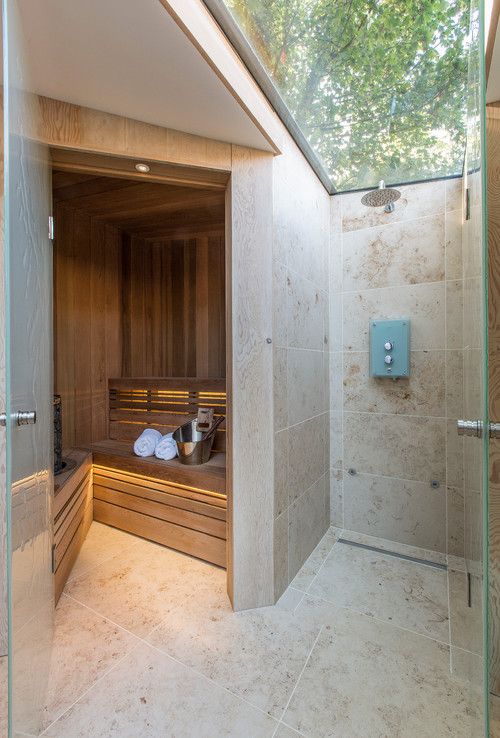
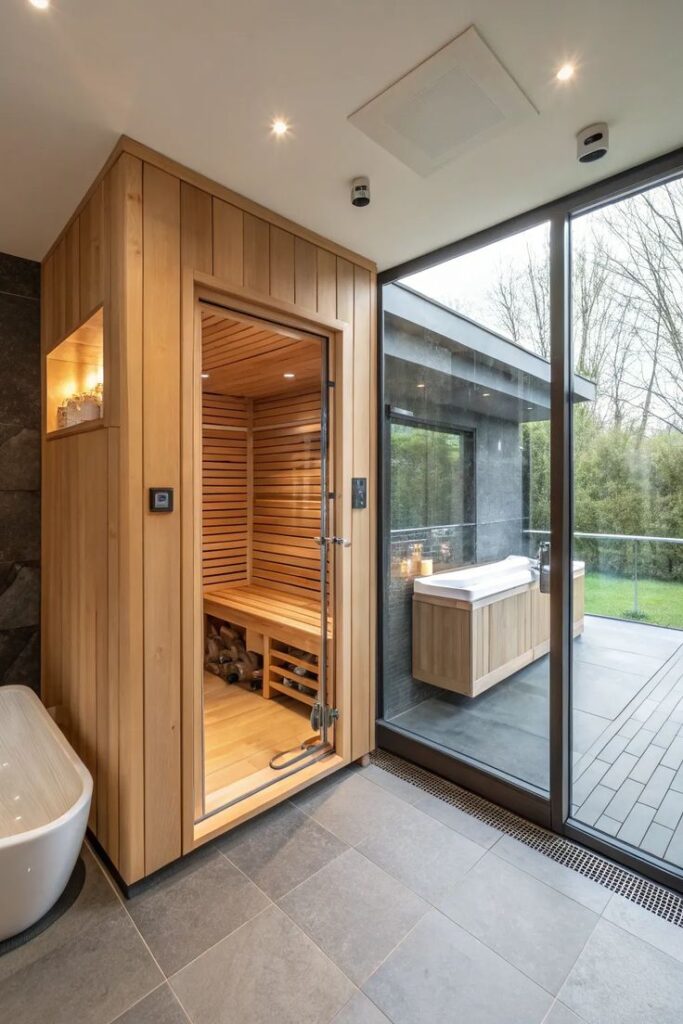
Types of Home Saunas
Home saunas come in several forms, each offering a distinct method of heat delivery, materials, and optional features. Your decision may depend on preference for heat intensity, ease of setup, and any added features like chromotherapy or aromatherapy.
Traditional Sauna
A traditional sauna, often called a Finnish sauna, uses an electric or wood-burning stove to heat rocks. You can pour water over these rocks to produce short bursts of steam, increasing humidity briefly. The air temperature typically ranges from 150°F to 195°F (65°C to 90°C).
Most traditional saunas are constructed from cedar wood, which is chosen for its durability, resistance to moisture, and pleasant scent. The classic sauna experience is characterized by dry heat, but adding water allows for some flexibility in humidity. Benches are usually present at multiple heights so you can select your heat level.
The setup can be more involved, sometimes requiring dedicated ventilation and electrical work. The larger, sturdy designs accommodate several people at once. Traditional saunas are valued for their authentic feel and the ritual aspect, making them a preferred choice for those seeking a classic experience.
Infrared Sauna
Infrared saunas use ceramic heaters or carbon panels that emit infrared light, directly warming your body without significantly heating the surrounding air. Far infrared saunas are particularly popular for their deeper, more targeted heat penetration, which many users find gentler compared to traditional saunas.
Temperatures in these saunas are lower, generally between 120°F and 150°F (49°C to 65°C), making them more comfortable for longer sessions. Infrared models also use less electricity and are often easier to install in your home, sometimes requiring only a standard power outlet.
Many infrared saunas come with additional features such as chromotherapy lighting to enhance relaxation. The designs are compact, often fitting one or two people, and some are even portable. Infrared saunas are suitable if you want a quick setup and quieter operation, paired with efficient heat delivery.
Steam Saunas
Steam saunas, also known as steam rooms, create a moist heat environment by pumping steam into a sealed space. Humidity levels in these saunas can reach up to 100%, with temperatures usually maintained between 110°F and 120°F (43°C to 49°C).
Materials like tile or glass are commonly used in construction instead of wood, since these resist moisture buildup and prevent mildew. The high humidity can feel less intense than the dry heat of a traditional sauna, but some people may find it more difficult to breathe comfortably in thick steam.
Steam saunas can also incorporate aromatherapy, infusing essential oils into the steam for added sensory benefits. Installation does require water resistant sealing and proper drainage, so planning is essential. Steam saunas are popular if you prioritize moist heat and the soothing effects of steam inhalation.
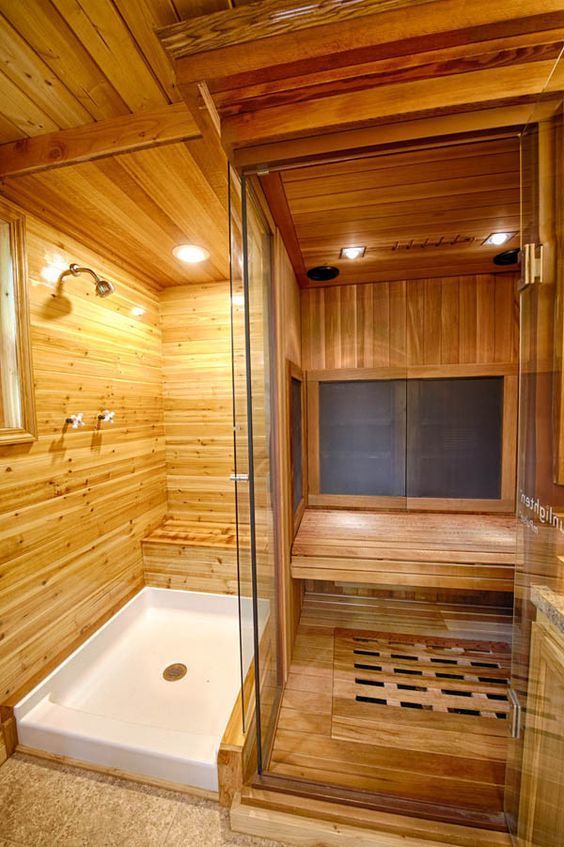

Health and Wellness Benefits
A home sauna can complement your wellness routine by offering specific advantages such as stress reduction, pain management, and better sleep. These effects are rooted in the body’s physiological responses to controlled heat exposure.
Relaxation and Stress Relief
Regular use of a home sauna encourages your body to release endorphins, which act as natural mood enhancers. The warmth relaxes muscle tension and can help calm your mind, leading to a sense of zen and tranquility.
Elevated body temperature improves circulation and creates a soothing environment that helps you manage daily stress more effectively. You may notice decreased feelings of anxiety and improved emotional balance after each session.
Incorporating sauna sessions into your routine can support your body’s stress response, making it easier for you to unwind after demanding days. Many find that even a short session is enough to bring about a noticeable sense of relaxation and calm.
Detoxification and Pain Relief
Sweating in a sauna can help your body eliminate certain toxins through the skin. Although detoxification is primarily managed by the liver and kidneys, the significant sweating induced by sauna use may complement this process.
The heat also helps dilate blood vessels, increasing circulation to muscles and joints. This can promote pain relief and reduce inflammation in areas affected by strain or soreness.
Athletes and people with chronic joint discomfort often report less stiffness and more comfort after regular sauna bathing. The combination of heat, improved blood flow, and endorphin production can contribute to better overall therapeutic benefits for your physical wellness.
Improved Sleep and Comfort
Sauna sessions late in the day may help you fall asleep faster and improve overall sleep quality. The process of gradual cooling after heat exposure signals your body that it’s time to rest.
Muscle relaxation and stress reduction also play a role in enhancing nightly comfort, making it easier to maintain a consistent sleep schedule. Many sauna users experience less night-time discomfort and fewer interruptions during sleep.
Improved sleep supports your immune system, memory, and mood, further reinforcing the role of a home sauna in your broader health and wellness strategy.
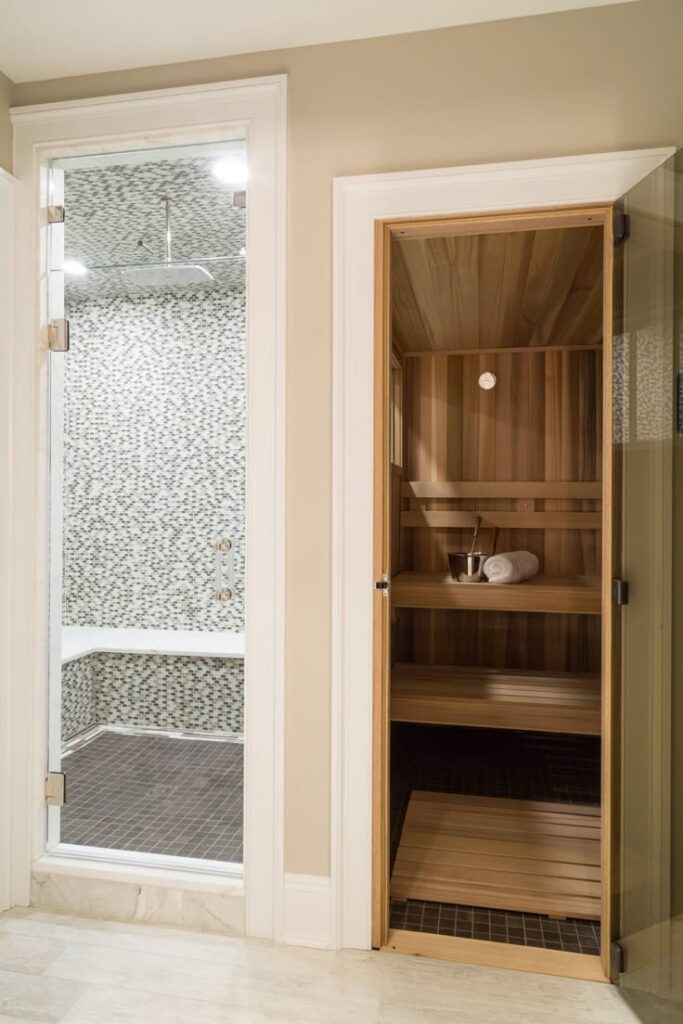
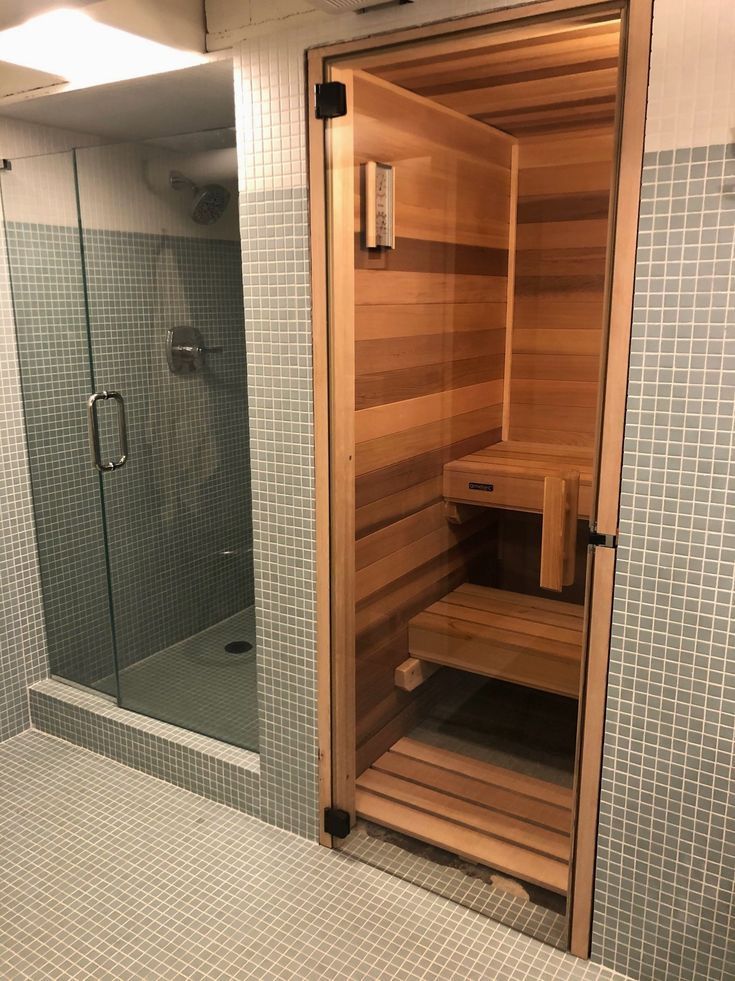
Features and Materials
A home sauna’s quality depends on the right materials, the proper heating system, and well-chosen accessories. Choosing appropriately ensures safety, ease of use, and lasting value.
Durable Materials Selection
Selecting durable materials is fundamental to building or choosing a reliable home sauna. Cedar wood is highly preferred because it’s resistant to moisture, doesn’t warp easily, and has a natural resistance to decay and insects. Its pleasant scent also enhances the sauna experience and helps mask odors.
Hemlock and spruce are alternative options; both offer good insulating properties but may not resist moisture as effectively as cedar. Tongue and groove paneling provides a secure, tight fit, which helps seal in heat and maintain consistent temperatures.
Use moisture-resistant materials for flooring, such as sealed concrete or specialized tiles, to prevent damage and ensure easy cleaning. Stainless steel can be used for handles and fixtures, as it resists corrosion and maintains a polished look over time.
Heating System Options
A sauna’s heating system is the core component that determines efficiency, performance, and running costs. Electric heaters are the most common for home saunas, offering fast, precise temperature control with minimal maintenance needs. They are easy to install and are suitable for both indoor and outdoor settings.
Ceramic heaters are frequently used in infrared saunas. They emit far infrared rays that penetrate the body for gentle, consistent heating. Infrared systems generally operate at lower air temperatures compared to traditional saunas, making them a practical choice for those who prefer a milder experience.
When choosing a heater, consider power requirements, available space, and ventilation. Proper electrical wiring and safety certifications are important for reliable operation and peace of mind.
Sauna Accessories and Enhancements
Sauna accessories and enhancements improve comfort and the health benefits of your sauna sessions. Popular options include aromatherapy diffusers for distributing essential oils and headrests or ergonomic benches for added seating comfort.
Chromotherapy lighting allows you to enjoy various light colors, which some users associate with relaxation or wellness effects. Built-in music speakers, timers, and temperature controls can streamline your experience.
Accessory Table:
| Accessory | Purpose |
|---|---|
| Aromatherapy Diffuser | Disperses essential oils |
| Chromotherapy Lighting | Relaxation, mood support |
| Ergonomic Benches | Improved seating comfort |
| Built-in Speakers | Music or audio relaxation |
Thoughtful accessory selection can transform the atmosphere and convenience of your sauna without complicating maintenance or use.
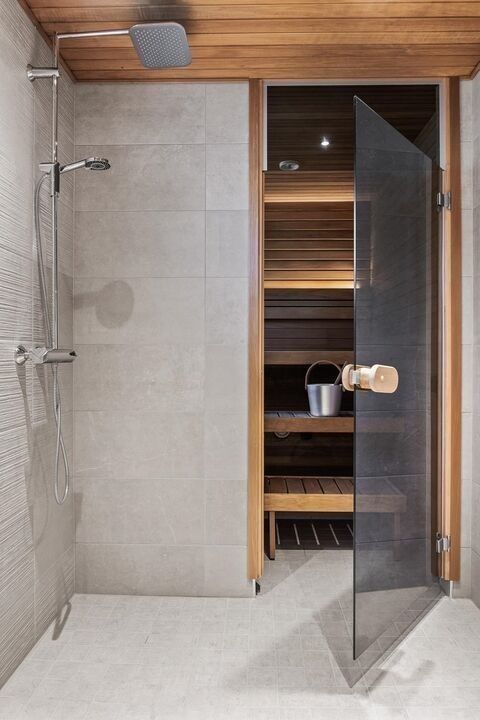
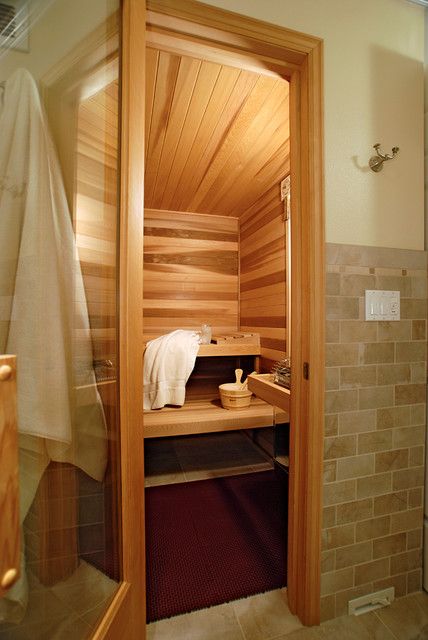
Home Sauna Installation and Setup
You can choose between pre-built or modular kits and need to carefully plan for entry doors and the interior layout. Each step impacts comfort, installation complexity, and long-term functionality.
Pre-Built and Modular Options
Pre-built saunas arrive ready to assemble and often include home sauna kits with all required parts. These are ideal if you want a simplified installation process and predictable outcome. Most modular sauna kits use interlocking panels, so you can set up your sauna in hours instead of days.
Key advantages of modular and pre-built kits:
- Minimal carpentry skills required
- Prefabricated wiring and insulation
- Clear assembly instructions
You should plan for a solid, level surface during installation. Popular surfaces include wood and tile, but avoid concrete floors unless properly insulated, as cold surfaces can affect heat retention. Choose a dry, well-ventilated area away from direct water exposure.
Entry Doors and Layout Considerations
Entry doors are an essential part of a sauna’s design. Pre-hung doors save both time and effort during installation and ensure a proper seal to retain heat. Door materials usually include tempered glass or insulated wood to provide safety and energy efficiency.
What to keep in mind for layout:
- Install the door to swing outward for safety
- Allow enough clearance in the entryway
- Ensure benches aren’t obstructing access
Your layout should provide easy access and efficient use of internal space. Place benches at varying heights to offer temperature options for users. Always provide sufficient ventilation for air quality and comfort.
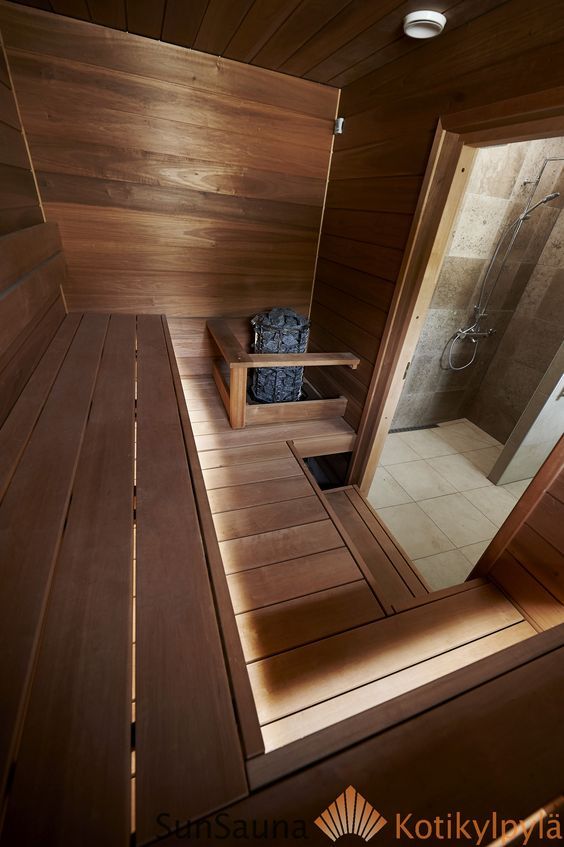
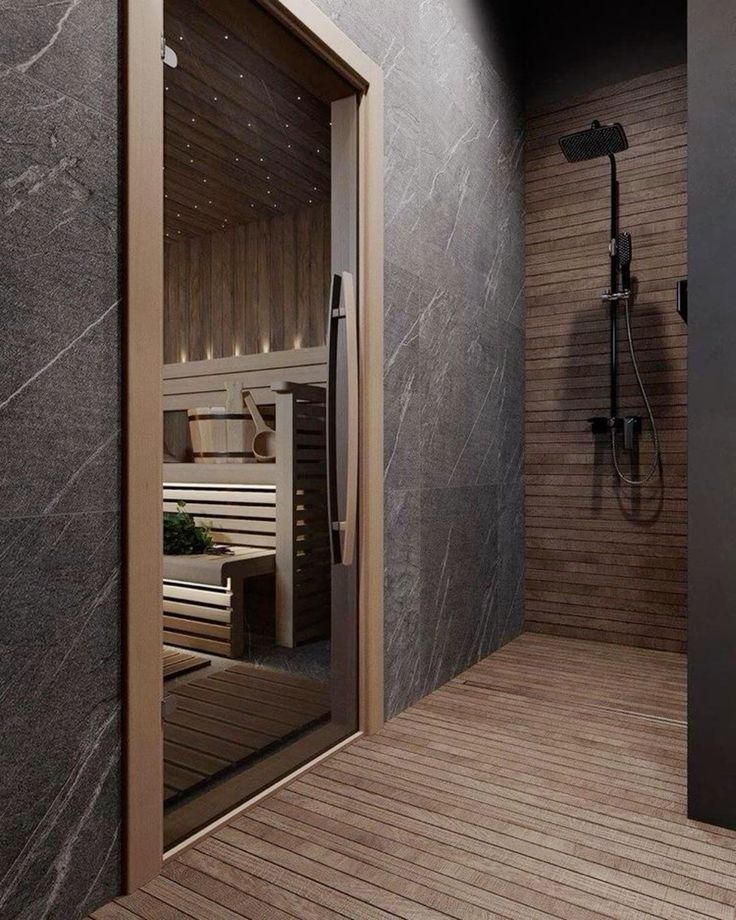
Sauna Use and Maintenance
Proper sauna use boosts comfort, optimizes your overall experience, and promotes the longevity of your sauna. Good maintenance routines reduce wear, improve hygiene, and ensure reliable performance for years to come.
Optimizing Sauna Experience
To maximize the benefits of your sauna sessions, start by setting the temperature between 150°F and 195°F. This range provides most users with optimal heat and comfort. Always shower before entering to keep the environment clean.
Consider placing towels or sauna mats on benches. This not only adds comfort but also prevents sweat from soaking into the wood.
Stay hydrated by drinking water before and after use. Limit sessions to 15-20 minutes for safe and effective use, and cool down gradually following your session.
Listen to your body—if you feel dizzy or uncomfortable, leave the sauna. For those seeking to build strength, alternate between hot and cold exposure, but do not overexert yourself.
Regular Maintenance Guidelines
Keeping your sauna clean is essential for comfort and hygiene. Lightly scrub benches and floors with a soft brush after each use to remove sweat and residue.
After each session, ventilate the sauna by leaving the door open or using a portable fan. This helps moisture evaporate and prevents mold or wood rot.
Use filtered or soft water if possible, as hard water can stain or damage the wood over time.
Maintenance Checklist:
- Wipe surfaces regularly
- Replace sauna stones every 1-3 years
- Treat wood with approved sauna cleaners if necessary
- Inspect for signs of wear or damage
Good care keeps your sauna strong, clean, and ready for use.
- 734shares
- Facebook0
- Pinterest734
- Twitter0



